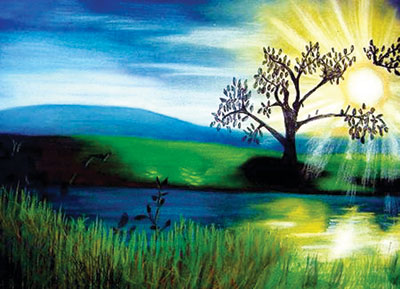All Nonfiction
- Bullying
- Books
- Academic
- Author Interviews
- Celebrity interviews
- College Articles
- College Essays
- Educator of the Year
- Heroes
- Interviews
- Memoir
- Personal Experience
- Sports
- Travel & Culture
All Opinions
- Bullying
- Current Events / Politics
- Discrimination
- Drugs / Alcohol / Smoking
- Entertainment / Celebrities
- Environment
- Love / Relationships
- Movies / Music / TV
- Pop Culture / Trends
- School / College
- Social Issues / Civics
- Spirituality / Religion
- Sports / Hobbies
All Hot Topics
- Bullying
- Community Service
- Environment
- Health
- Letters to the Editor
- Pride & Prejudice
- What Matters
- Back
Summer Guide
- Program Links
- Program Reviews
- Back
College Guide
- College Links
- College Reviews
- College Essays
- College Articles
- Back
Color Theory
Have you ever tried something and realized there was more to it than you thought? In cooking, you might not have realized how specifically you have to hold the knife. Or maybe playing a musical instrument proved to be trickier than you thought. Color theory is also more complicated than most people think. Most people believe that color theory is simply how colors relate to each other on the color wheel, but the application of color theory is affected by the light source, the techniques used in the painting, the characteristics of the paint, and the shape of the lines in the painting.
One thing that affects the use of color theory is the light source. The light source helps you clearly see what you are painting. “How you see the subjects you want to paint depends on the light that surrounds and bathes them” (Moses 27-28). “Whether you follow the light source in your photo or make one up, you must remain consistent with that light” (Pollard 25). If you ignore your light source, you can’t paint realistically; thus the light source affects how color theory can be applied.
Another thing that affects the application of color theory is technique. Scumbling, for example, changes the colors of your paints without mixing them. “Scumbling involves applying an uneven layer of paint over a dry, thin, relatively oil-free underpainting so that the first color shows through to some extent….It is an excellent way of modifying color without sacrificing liveliness” (Harper 44). Glazing is also an alternative way to mix your paints. “A glaze is a thin layer of transparent paint laid over a dry layer that can be either thick or thin” (Harper 54). “Use glazes if you wish to modify colors without mixing them overmuch.” (“Color Theory: Harmony in Paintings”) Both techniques allow you to create looks that would never have been possible had you been mixing your paints instead. Clearly, technique is very important to the application of color theory.
The characteristics of the paint also affect how color theory is applied. The texture of the paint affects its value. “For example, the shinier the surface, the darker the color appears....texture, in other words alter[s] a color’s light effect.” (“Color Theory and Painting”) Knowing this can keep you from using the wrong shade of color in your painting. In this way the characteristics of the paint affect the use of color theory.
Yet another thing that affects the application of color theory is line shape. Different line shapes create different moods. (Moses 73-77). This means you can change the mood of your painting simply by changing the shapes of your lines rather than changing the colors you are using. Line shape definitely affects how color theory is applied.
Most people think that color theory is nothing more than how colors relate to each other on the color wheel, but the application of color theory is also affected by the light source, the techniques used in the painting, the characteristics of the paint, and the shape of the lines in the painting. The light source helps you paint realistically. Scumbling and glazing change colors without mixing them. The texture of the paint affects its value. Changing the shape of your lines changes the mood of your painting. So, the next time something looks simple, don’t be fooled—it may be more complicated than you think.
Works Cited
"Color Theory & Painting." Color Theory & Painting. N.p., n.d. Web. 6 June 2014. <http://www.artcellar.net/colortheoryptg.html>
"Color Theory: Harmony in Paintings."color theory for painters. N.p., n.d. Web. 6 June 2014. <http://www.oil-painting-techniques.com/color-theory.html>.
Harper, Sally. Artist's handbook materials, techniques, color and composition, style, subject. Hauppauge, NY: Barron's Educational Series, 2003. Print.
Moses, Marcia. Understanding color: creative techniques in watercolor. New York: Sterling Pub., 2007. Print.
Pollard, Julie Gilbert. Brilliant color: painting vibrant outdoor scenes. Cincinnati, Ohio: North Light Books, 2009. Print.

Similar Articles
JOIN THE DISCUSSION
This article has 0 comments.
